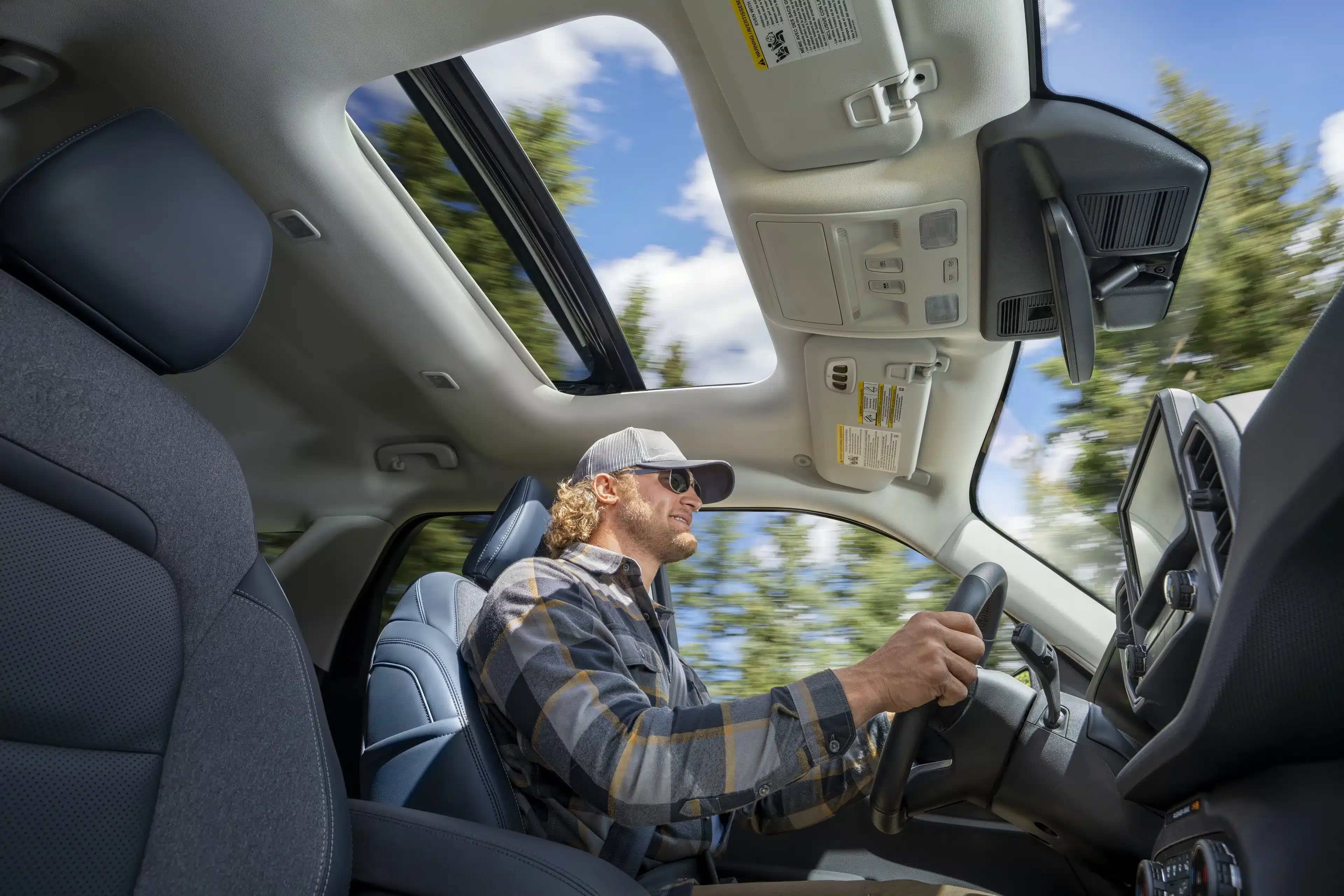
Section 179 Tax Deduction

Section 179 Deductions
For 2024, businesses can write off up to $1,220,000 with the Section 179 deduction, subject to a spending cap of $3,050,000.

Section 179 Deductions
Near Ottawa IL
Are you looking for ways to cut business costs while boosting performance? We recommend exploring the Section 179 tax deduction. This IRS tax code was designed to help small and medium-sized businesses invest in their growth by allowing them to deduct up to 100% of the expenses for vehicles used for business purposes.
To take advantage of the Section 179 tax savings this year, you must purchase and put your vehicle into service by December 31, 2024. Visit our dealership near Ottawa today to find the new or pre-owned trucks and vans that can elevate your business!

What Are the Section 179 Tax Deduction Limits for 2024?
The Section 179 tax code was designed to primarily support small and medium-sized businesses. As a result, there are specific spending limits that determine how much a company can deduct. For 2024, businesses can deduct up to $1,220,000 through the Section 179 deduction, with a spending cap of $3,050,000. Once this cap is exceeded, the deduction limit begins to phase out, providing significant savings for small and medium operations looking to enhance their business with essential vehicle investments.
Section 179 allows for a deduction of up to 100% of the costs for qualifying commercial vehicles. Additionally, you can also utilize partial Section 179 deductions for traditional passenger vehicles that are used for business at least 50% of the time. If you’re wondering whether used cars qualify for Section 179, they do! Just remember, the vehicle needs to be "new to you."


Which Vehicles Are Eligible for Section 179?
There are over 150 vehicles that qualify for the Section 179 deduction under current guidelines. This comprehensive list of qualifying models includes (but is not limited to) popular trucks, vans, and large SUVs with a Gross Vehicle Weight Rating (GVWR) over 6,000 pounds, such as:
- Silverado 2500HD, Silverado 3500HD, Silverado 4500HD, Silverado 5500HD, Silverado 6500HD
- Express Cargo Van 2500, Express Cargo Van 3500, Express Passenger Van
- Suburban
- Tahoe
- Traverse
For business owners seeking to take advantage of these benefits, reaching out to vehicle sales or finance experts is a strategic first step. These professionals can provide tailored advice on which Section 179 eligible vehicles best suit your business needs and how to maximize your tax savings. This personalized guidance ensures you make informed decisions, helping you leverage the full potential of the Section 179 deduction for your business-use vehicles.
The vehicles eligible for the greatest tax savings are trucks with a GVWR over 6,000 pounds and a bed length of at least six feet. These new vehicles qualify for the maximum first-year depreciation deduction, which can cover up to the full purchase price. SUVs and trucks with a bed length shorter than six feet but a GVWR greater than 6,000 pounds qualify for a first-year depreciation deduction of up to $25,000 of the purchase price, plus 60% depreciation on any remaining balance.
For detailed specifications on gross vehicle weight ratings and other requirements, refer to the IRS guidelines. In general, most trucks, commercial vehicles, and large SUVs purchased or leased for business use will qualify.
As always, it's recommended to consult with your tax professional to ensure the deduction applies to your specific vehicle purchase.
What is Section 179 and how does it benefit small to medium business owners?
Understanding Section 179: A Boon for Small to Medium Business Owners
Section 179 is a strategic provision in the IRS tax code designed to support small to medium business owners. By allowing them to deduct the full purchase price of qualifying equipment and software from their taxable income, this provision makes the acquisition of essential business tools more affordable.
Key Benefits:
- Immediate Financial Relief: Instead of depreciating the cost of equipment over several years, businesses can claim the deduction in the same tax year. This accelerated tax benefit can significantly improve cash flow.
- Wide Range of Eligible Equipment: Qualifying items under Section 179 include tangible assets such as machinery, office furniture, vehicles, and certain software. This versatility makes it easier for businesses to tailor their investments to their unique needs.
- Cap on Deductions: To ensure the advantage remains targeted towards smaller enterprises, there is a limit on the total amount that can be deducted. Companies that exceed this spending threshold do not qualify, preserving the benefit for genuine small to medium businesses.
Section 179 empowers business owners to reinvest in their operations, fostering growth and enhancing competitiveness without the extended financial burden.
What should business owners keep in mind regarding Section 179 and tax guidelines?
Key Considerations for Business Owners on Section 179 and Tax Guidelines
Understanding Section 179 and staying updated on tax guidelines is crucial for business owners aiming to maximize their tax advantages. Here’s what you need to keep in mind:
- Individual Variability:
- Every business has unique tax circumstances. It's essential to evaluate how Section 179 applies specifically to your situation.
- Current Regulations:
- Tax rules and federal guidelines can evolve. Information that is accurate today may change tomorrow, affecting how you benefit from Section 179.
- Professional Guidance:
- Consult with a tax advisor to navigate the complexities and ensure you apply the most favorable strategies based on the latest guidelines.
- Comprehensive Understanding:
- Engage in discussions with your advisor to fully grasp how Section 179 fits into your overall tax plan, impacting your business financials.
By keeping these factors in mind, you can effectively leverage Section 179 to enhance your business's financial strategy.
Are vehicles over 14,000 pounds eligible for a 100% deduction under Section 179?
Yes, vehicles weighing more than 14,000 pounds are indeed eligible for a full 100% deduction under Section 179. This tax benefit allows businesses to deduct the entire purchase price of these heavy-duty vehicles in the year they are put into service.
Moreover, it's not only the weight that can qualify a vehicle for this deduction. Vehicles that have been specially modified for specific tasks—such as ambulances, police cars, or construction equipment—are also eligible for the full deduction, irrespective of their weight.
These provisions make it financially advantageous for businesses to invest in necessary assets by easing the upfront costs.
How does bonus depreciation work with Section 179 deductions?
Understanding Bonus Depreciation and Section 179 Deductions
Bonus Depreciation and Section 179 Deductions are powerful tax incentives that can significantly reduce the taxable income of businesses purchasing vehicles.
Section 179 Deductions
For 2023, businesses can deduct up to $12,200 for light vehicles, with the actual deduction amount determined by the percentage of business use. If a vehicle is used 100% for business, the full $12,200 can be deducted. However, if the business use is less, the deduction proportionately decreases.
For heavier vehicles, Section 179 allows for a deduction up to $28,900. This typically applies to vehicles categorized as "heavy" by tax guidelines, often those weighing between 6,000 and 14,000 pounds.
Bonus DepreciationIn addition to Section 179, businesses can take advantage of bonus depreciation. The bonus depreciation for 2023 is set at 80%, permitting businesses to deduct 80% of the remaining purchase price of a vehicle, on top of the Section 179 deduction.
Vehicles over 14,000 pounds automatically qualify for a 100% deduction on the purchase price, thanks to these provisions.
Example Breakdown
- Light Vehicles:
- Section 179 Deduction: Up to $12,200.
- Bonus Depreciation: 80% of the remaining cost after Section 179.
- Heavy Vehicles (6,000 - 14,000 pounds):
- Section 179 Deduction: Up to $28,900.
- Bonus Depreciation: 80% off the remaining purchase price.
- Vehicles Over 14,000 pounds:
- Total Deduction: 100% of the purchase price.
These tax incentives are designed to encourage businesses to invest in new vehicles by providing significant upfront savings. They allow businesses to write off a substantial portion of a vehicle's cost in the year of purchase, reducing taxable income and improving cash flow.
Purchase Your Next Business Vehicle at Bill Walsh Automotive Group Today!
Interested in learning how you can deduct the costs of your next car work truck or cargo van? Reach out to Bill Walsh Automotive Group to connect with our auto financing team and discuss the details. We’re here to answer any questions you have about deduction limits and provide tips on maximizing your Section 179 tax savings!
Disclaimer: The information provided on this page regarding the Section 179 tax deduction is for informational purposes only and should not be considered tax advice. Tax laws are subject to change, and individual circumstances may vary. We recommend consulting with a qualified tax professional to understand how Section 179 may apply to your specific situation. Bill Walsh Automotive Group does not guarantee the accuracy or completeness of the information presented and is not liable for any actions taken based on this content. Information accurate at date of publishing, refer to Section179.org for most up-to-date specifications.
Visit Us at Our Local Dealership
Take advantage of the Section 179 tax deduction and maximize your savings this year. For more details or assistance, visit us at our local dealership or check out our other locations online. Our team is here to help you make the most of this valuable tax benefit.